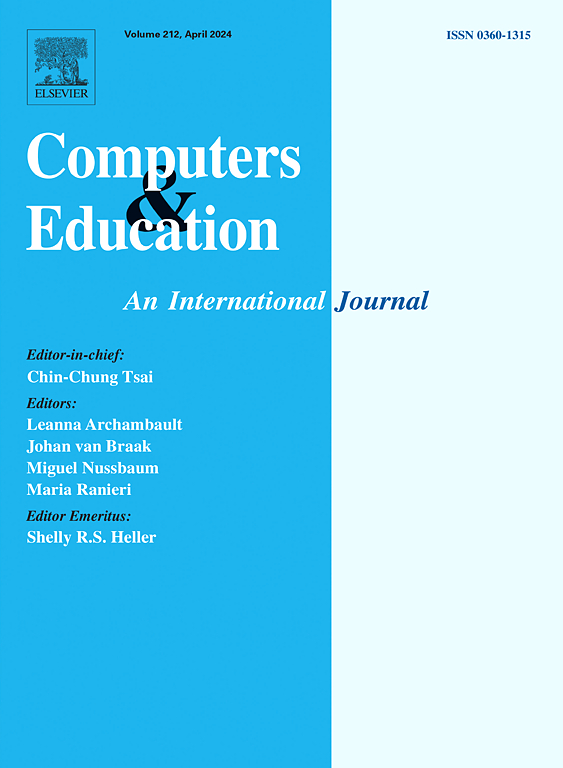Automated feedback improves teachers’ questioning quality in brick-and-mortar classrooms: Opportunities for further enhancement
IF 8.9
1区 教育学
Q1 COMPUTER SCIENCE, INTERDISCIPLINARY APPLICATIONS
引用次数: 0
Abstract
AI-powered professional learning tools that provide teachers with individualized feedback on their instruction have proven effective at improving instruction and student engagement in virtual learning contexts. Despite the need for consistent, personalized professional learning in K-12 settings, the effectiveness of automated feedback tools in traditional classrooms remains unexplored. We present results from 224 Utah mathematics and science teachers who engaged in a pre-registered randomized controlled trial, conducted in partnership with TeachFX, to assess the impact of automated feedback in K-12 classrooms. This feedback targeted “focusing questions” — questions that probe students’ thinking by pressing for explanations and reflection. We find that teachers opened emails containing the automated feedback about 53–65% of the time, and the feedback increased their use of focusing questions by 20% (p < 0.01) compared to the control group. The feedback did not impact other teaching practices. Qualitative interviews with 13 teachers revealed mixed perceptions of the automated feedback. Some teachers appreciated the reflective insights, while others faced barriers such as skepticism about accuracy, data privacy concerns, and time constraints. Our findings highlight the promises and areas of improvement for implementing effective and teacher-friendly automated professional learning tools in brick-and-mortar classrooms.
自动化反馈提高了教师在实体教室中的提问质量:进一步提高的机会
人工智能驱动的专业学习工具为教师提供个性化的教学反馈,已被证明在改善虚拟学习环境中的教学和学生参与度方面是有效的。尽管在K-12课程中需要持续的、个性化的专业学习,但传统课堂中自动化反馈工具的有效性仍未得到探索。我们展示了224名犹他州数学和科学教师的结果,他们参与了一项预先注册的随机对照试验,与TeachFX合作进行,以评估自动反馈在K-12教室中的影响。这种反馈针对的是“重点问题”——通过要求解释和反思来探究学生思维的问题。我们发现,教师打开包含自动反馈的电子邮件的时间约为53-65%,反馈使他们对焦点问题的使用增加了20% (p <;0.01)。这些反馈对其他教学实践没有影响。对13名教师进行的定性访谈显示,他们对自动反馈的看法不一。一些老师欣赏这种反思性的见解,而另一些老师则面临着诸如对准确性、数据隐私问题和时间限制的怀疑等障碍。我们的研究结果强调了在实体教室中实施有效和教师友好的自动化专业学习工具的承诺和改进领域。
本文章由计算机程序翻译,如有差异,请以英文原文为准。
求助全文
约1分钟内获得全文
求助全文
来源期刊

Computers & Education
工程技术-计算机:跨学科应用
CiteScore
27.10
自引率
5.80%
发文量
204
审稿时长
42 days
期刊介绍:
Computers & Education seeks to advance understanding of how digital technology can improve education by publishing high-quality research that expands both theory and practice. The journal welcomes research papers exploring the pedagogical applications of digital technology, with a focus broad enough to appeal to the wider education community.
 求助内容:
求助内容: 应助结果提醒方式:
应助结果提醒方式:


